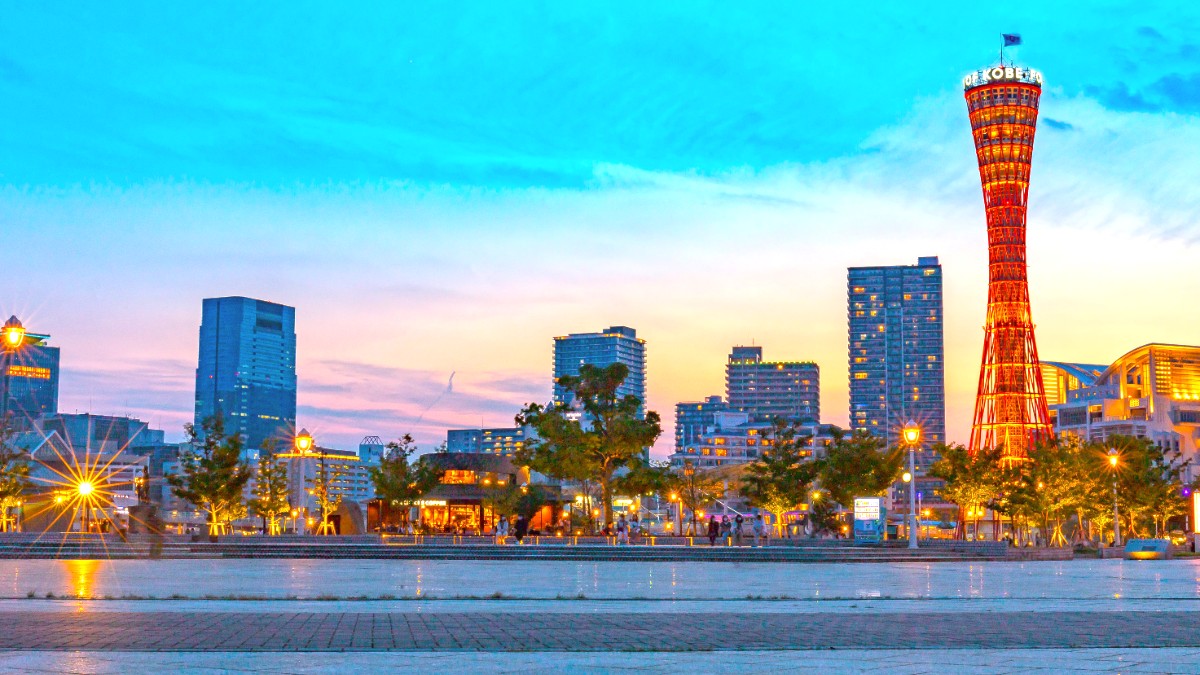
Kansai, Japan
Kobe's early exposure to Western trade and culture in the late 19th century profoundly influenced its food. This is most evident in the city's strong tradition of "Yoshoku" (Japanese-style Western cuisine) and its excellent bakeries and patisseries.
At the same time, its location near the sea and mountains has access to fresh, high-quality ingredients, supporting a strong foundation of traditional Japanese dishes. The city is also a significant hub for sake production, contributing another layer to its rich gastronomic heritage.
Highly marbled, tender wagyu beef from Tajima cattle, renowned for its rich flavor and melt-in-your-mouth texture.
Nada district is a top sake-producing region, known for its high-quality water and crisp, clean sake.
Strong Western influence means excellent bakeries and patisseries, with unique Japanese twists.
Highly marbled, tender wagyu beef from Tajima cattle, renowned for its rich flavor.
Enjoy as teppanyaki, sukiyaki, shabu-shabu, or yakiniku. Look for certification stickers.
A local delicacy similar to takoyaki but with a softer, eggy batter.
Typically served with a light dashi for dipping, not sauces and toppings. Originates near Kobe.
From Nada district, known for its crisp, clean, often dry profile due to "Miyamizu" water.
Enjoy at local izakayas, dedicated sake bars, or directly at breweries with tours and tastings.
Pan-fried dumplings, a common and delicious street food. You will find many variations, notably in Nankinmachi (Chinatown).
Steamed pork buns, a staple of Japanese Chinatowns. Roushouki in Nankinmachi is notably famous for its small, flavorful butaman.
Kobe features numerous high-end restaurants, especially those specializing in Kobe Beef prepared as teppanyaki or steak.
This category presents abundant choices for various Japanese cuisines, with comfortable dining experiences.
For quick, satisfying meals, explore street food and casual eateries.
Japanese-style Western dishes reflecting Kobe's port history.
Look for "Yoshoku" restaurants, often having a nostalgic, retro ambiance.
Japanese pubs where you order various small, shareable plates for the table.
A social setting for drinks and casual dining.
Department store food halls with gourmet foods and bentos.
Covered arcades like Sannomiya Center Gai host diverse eateries.
Chinese, Italian, French, and other cuisines reflect the city's diversity.
Specific dishes appear during festivals, like yakisoba or takoyaki.
Gluten-free dining is specifically challenging as soy sauce, a staple, contains wheat.
Inform staff about allergies, but language barriers can pose difficulties.
It is strongly recommended to carry an allergy card translated into Japanese, clearly stating your dietary restrictions.
Utilize translation apps to communicate your dietary needs clearly.
Careful navigation is still necessary due to common use of dashi in many Japanese dishes.
Remember that tipping is not customary in Japan and can cause confusion.
A skilled chef cooks your Kobe Beef on a large iron griddle directly in front of you.
Cook thinly sliced beef and vegetables in a pot at your table.
Grill bite-sized pieces of marinated meat, often including Kobe Beef, at your table.
The food halls in department stores like Daimaru are a culinary delight.
High-quality prepared foods, elaborate bentos, gourmet groceries, and exquisite desserts.
Nankinmachi (Chinatown) is an excellent area for street food and casual Chinese-Japanese eateries.
Roushouki is famous for its small, flavorful butaman.
Kobe has a strong tradition of excellent bakeries and patisseries, blending European and Japanese styles.
While not unique to Kobe, local ramen shops offer distinct broth and noodle styles worth discovering.
Kobe's location near mountains and sea ensures access to fresh, high-quality seasonal ingredients for various dishes.